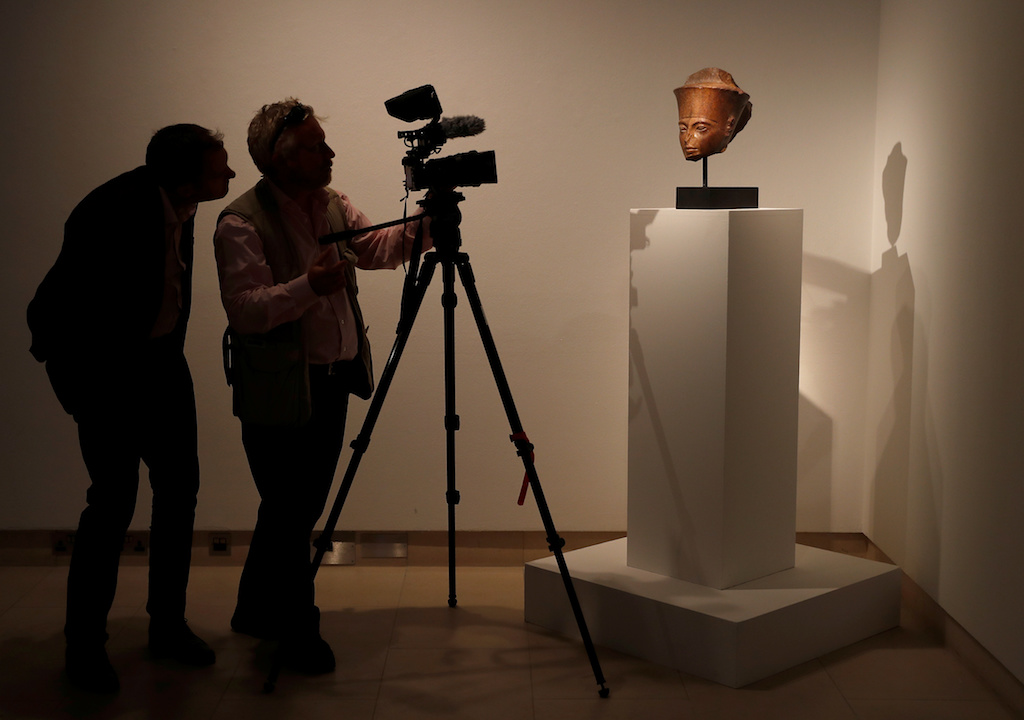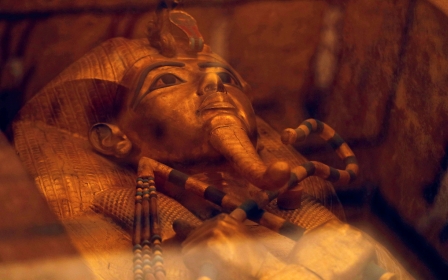Tutankhamen head sells for $6m at London auction despite Egypt's ire

A brown quartzite head of young king Tutankhamen sold for $6m at an auction in London, despite Egypt voicing anger over the sale.
The more than 3,000-year-old sculpture, displayed at Christie's London auction house, shows the boy king taking the form of the ancient Egyptian god Amen.
Egyptian authorities had appealed to Christie's to block the sale, saying the sculpture had been stolen.
That appeal was rejected by the auction house.
Mostafa Waziri, secretary-general of Egypt's Supreme Council of Antiquities, told the Reuters news agency he was disappointed the sale was continuing amid requests for information and protests from government officials and Egypt's embassy in London.
New MEE newsletter: Jerusalem Dispatch
Sign up to get the latest insights and analysis on Israel-Palestine, alongside Turkey Unpacked and other MEE newsletters
"I believe that it was taken out of Egypt illegally...they have not presented any documents to prove otherwise," Waziri said.
"We aren't going to stop. We are going to keep following these guys, even the [buyer]. We are going to keep asking again and again [for it to be returned]."
An unidentified buyer bought the head for $5.97m on Thursday, including commission and in line with the estimated price before the sale, Christie's said.
Outside the auction house, about 20 protesters stood silently and held placards that said "Egyptian history is not for sale", Reuters reported.
Staff at Christie's said they had taken the necessary steps to prove its provenance and the sale was legitimate.
"It's a very well known piece ... and it has never been the subject of a claim," Laetitia Delaloye, head of the antiquities department at Christie's, told Reuters.
"We would never offer a piece where there is any concern about the provenance."
The 28.5cm high piece was in "extraordinary condition", she said, with just the ears and nose damaged.
It was expected to sell for more than £4m ($5m), plus commission, with a collector the most likely buyer.
'I believe that it was taken out of Egypt illegally...they have not presented any documents to prove otherwise'
- Mostafa Waziri, Egyptian antiquities chief
The head was sold from the private Resandro collection of Egyptian art.
Christie's said the sculpture was acquired from Munich-based dealer Heinz Herzer in 1985. Before that, Austrian dealer Joseph Messina bought the head in 1973-1974.
The auction house said Prinz Wilhelm Von Thurn und Taxis, a German aristocrat, "reputedly" had it in his collection by the 1960s.
"Historical objects by their nature, it's impossible to track them back over the millennia of their existence, so what we endeavour to do is to research their modern history," Delaloye said.
Christie's had been in touch with Egyptian authorities in Cairo and the London embassy, she added.
Egypt has long demanded the return of artefacts taken by archaeologists and imperial adventurers, including the Rosetta Stone kept in the British Museum.
Those campaigns were similar to Greece's demands for the Parthenon sculptures, as well as Nigeria's for the Benin Bronzes and Ethiopia's for the Magdala treasures.
Middle East Eye delivers independent and unrivalled coverage and analysis of the Middle East, North Africa and beyond. To learn more about republishing this content and the associated fees, please fill out this form. More about MEE can be found here.





